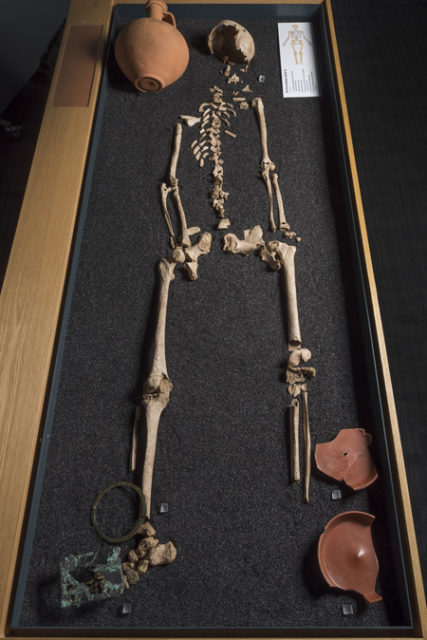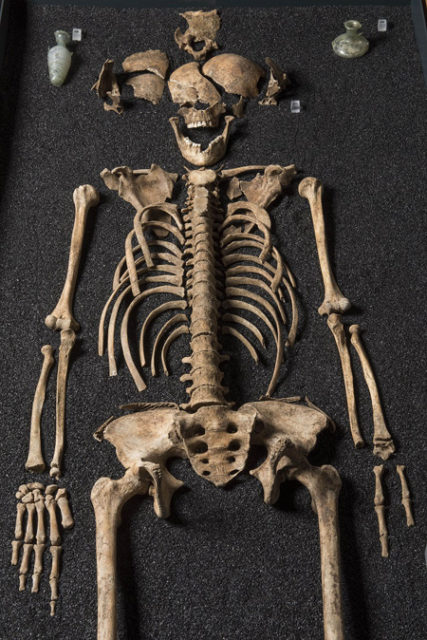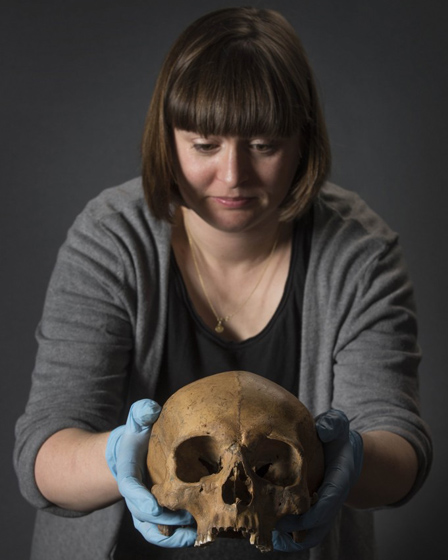They were two powerful, ancient empires that were separated by around 5,000 miles of impressive barren deserts and mountain ranges, as well the exposed large area of grasslands.
Still, a collection of surprising bones were found at a Roman cemetery located in London.
This finding provides new information into the relationship between Imperial China and the Roman Empire.
Examination of the two skeletons reveals that they date back to between the 2nd and 4th century AD.

They were unearthed at the location in the city’s Southwark area and it seems they might have been Chinese.
China and Rome were arguably the two most powerful civilizations of the time. The Romans had conquered Egypt in 208 BC, and their trade with China flourished.
While the Silk Road trade route was delivering spices, cloth, and some other luxurious items to the West for centuries before, the new fashions and wealth of the Romans brought a previously-unknown demand.
The majority of this trade was first done through India and Greece, but later it also occurred through the Parthian Empire.

The Roman Senate, although, saw that this trade was a threat on both moral and economic grounds.
Seneca the Younger had described how the silk cloth seemed to have a corrupting influence on the bodies of women and stated the material did not conceal the body, sacrificing one’s decency.
The discovery of the skeletons promises to rewrite the history of the Romans.
They suggest these two astounding empires had far greater connections than we had previously believed.
It has been known that there was large trade between ancient Rome and China along what has become known as the Silk Road, even though the two empires were thought to have viewed each other cautiously.
Accounts from that time propose the Chinese had been curious about the virtuous and tall people of Rome.
Though the Romans had found their rivals in the east very mysterious, they did value their silk cloth.
Regardless of the trade between the empires, only one person of the Asian ancestry had, prior to the findings in London, been discovered in locations that dated back to the Roman Empire – an adult man was found at Vagnari, located in Italy.
The two skeletons found in London had been buried among the remains of other citizens of the ancient Londinium.
An archaeologist, Dr. Rebecca Redfern from the Museum of London, has noted that how the Asians would have got there was a mystery.
The expansions of the Roman Empire that spread across most of western Europe and the Mediterranean had guided the movement and assimilation of several ethnically and geographically different communities.
The wealth and power meant that the Empire had trade links for products and raw materials; things such as silk throughout Europe, Africa, and out to the east, including China and India.
A recent study has proposed that Rome had been attracting immigrants from the farthest reaches of its empire beyond 2,000 years ago.
Examination of the skeletons that were discovered buried in two ancient cemeteries of Roman London dated them to the 1st to the 3rd centuries AD.
This showed that eight of them were from as far away as the Alps and North Africa.
The migrants, who had been mostly men and children, were buried in simple graves and seem to have been poor.
This suggests they might have come to the city optimistic to find success, but it is also possible that they had been slaves who were taken to the city by their Imperial masters.
The researchers have stated that this analysis is the first study to show evidence of individual migrants to Ancient Rome.
Several people traveled there, often from large distances, for trade or for their occupation – for instance, their social status or being in the military. Some other skeletons that were discovered in the same cemetery unveil another intriguing possibility.

Forensic specialists from Michigan State University have matched the shape and morphology of 22 skulls discovered at the location of their ancestry.
They propose at least four of the skeletons had been from Africa while two were Asian.
Isotope examination as well propose that five of the individuals seem to have been from the Mediterranean.
Perhaps the energetic suburb of London to the south of the River Thames had enjoyed a rich immigrant population that appeared to have a similar status to locals existing in the area.
This raises the possibility that maybe these Chinese visitors had actually settled in the area.
They could have even set up their own trade in the busy city.
While it might never be possible to find out exactly what they had been doing there, it was clear that there were more foreigners settling in the area than ever realized before.
It is hoped that DNA examination of the remains will help to give further information on the ancestry of those who had been buried in Southwark.
For instance, it might unveil whether or not the individuals were new arrivals from their distant lands or children of people who were brought to Britain as slaves.
The remains of one teenage girl had been discovered at the site with an ivory folding knife that was carved into the form of a leopard. Knives of a similar style have been discovered to be linked to Carthage.
Isotopes from her teeth propose she grew up in North Africa.
This suggests she was brought to London after growing up in the country of Africa.
The DNA tests unveiled the teenager had blue eyes, so maternal ancestry could have been traced to southeastern Europe and also West Eurasia at the eastern edge of the Roman Empire.
We have another story like this:4,000-year-old skeletons of mother & child embracing
It is possible that she was captured and made a slave throughout the several wars that were being waged between Rome and Carthage.
